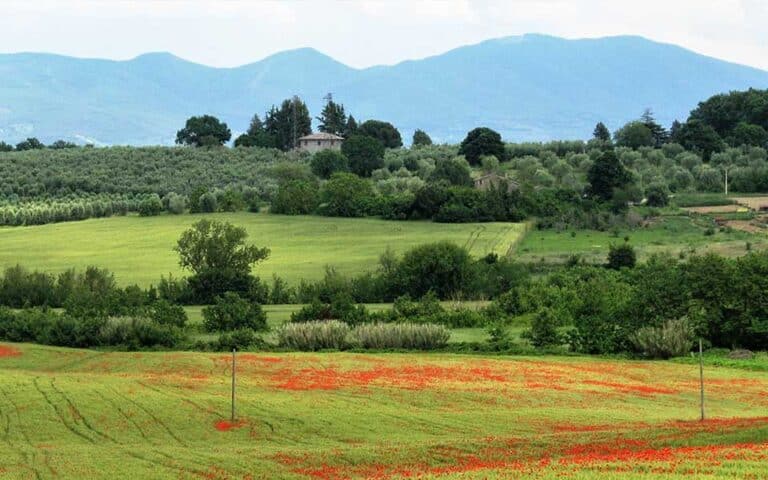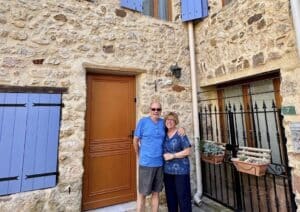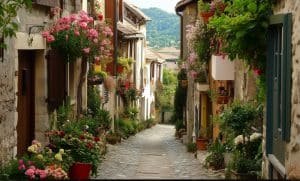Umbria – Known as “The Green Heart of Italy,” is a haven for those seeking a blend of tranquility, tradition, and authentic Italian experiences. In this article, we’ll explore the landscapes, history, cuisine, and cultural heritage of Umbria, unveiling why this region deserves a place on every traveler’s itinerary.
The Lush Landscapes of Umbria
Umbria’s landscapes are characterized by rolling hills, verdant forests, and serene lakes, creating a picturesque and tranquil setting. The region’s natural beauty is a major draw for visitors who seek outdoor adventures and scenic relaxation.
The Umbrian Countryside
The Umbrian countryside is dotted with charming villages and ancient farmhouses, set against a backdrop of olive groves and vineyards. The rolling hills and gentle slopes offer stunning views and create an ideal environment for outdoor activities. Hiking enthusiasts can explore trails that wind through the hills, offering panoramic views of the surrounding landscapes.
Lake Trasimeno
One of Umbria’s most notable natural features is Lake Trasimeno, the largest lake in central Italy. This serene body of water is perfect for a leisurely day of boating, fishing, or simply relaxing by the shore. The lake is surrounded by picturesque towns such as Passignano sul Trasimeno and Castiglione del Lago, each offering its own unique charm and local attractions.
A Tapestry of History and Heritage
Umbria boasts a rich historical and cultural heritage that spans from ancient times through the medieval period. The region’s history is reflected in its well-preserved towns, historic sites, and architectural treasures.
Assisi: The Birthplace of Saint Francis
The town of Assisi, perhaps the most famous in Umbria, is renowned for its spiritual significance and historical importance. It is the birthplace of Saint Francis of Assisi, the founder of the Franciscan Order. Visitors can explore the Basilica of Saint Francis, a UNESCO World Heritage site, which houses important frescoes by Giotto and other medieval artists.
Assisi’s historic center, with its narrow streets and medieval architecture, offers a glimpse into the past. The town is also home to other notable religious sites, including the Basilica of Santa Chiara, dedicated to Saint Clare, and the Basilica of San Rufino.
Perugia: A Medieval Marvel
Perugia, the regional capital, is a vibrant city with a rich history that dates back to Etruscan times. Its medieval architecture and narrow streets create a charming atmosphere for exploration. Highlights include the Piazza IV Novembre, the Palazzo dei Priori, and the Fontana Maggiore, a beautiful fountain dating back to the 13th century.
The city is also known for its cultural events, such as the Umbria Jazz Festival, which attracts music lovers from around the world. Perugia’s vibrant atmosphere and rich cultural scene make it a must-visit destination in Umbria.
Spoleto: A Blend of History and Culture
Spoleto is a historic town known for its impressive Roman and medieval architecture. The town’s landmarks include the ancient Roman theater, the Ponte delle Torri (a dramatic aqueduct bridge), and the Spoleto Cathedral. Spoleto is also famous for its annual Festival dei Due Mondi, a celebration of music, dance, and theater that draws artists and audiences from across the globe.
Culinary Delights of Umbria
Umbria’s cuisine is a reflection of its agricultural heritage, emphasizing fresh, local ingredients and traditional recipes. The region’s culinary offerings are a treat for food enthusiasts, with a focus on hearty, rustic dishes.
Traditional Umbrian Dishes
One of Umbria’s signature dishes is “tartufo,” or truffle, which is highly prized for its rich flavor and aroma. Truffles are often used in a variety of dishes, from pasta sauces to risottos. The region is also known for its “porchetta,” a savory roasted pork dish seasoned with herbs and spices, and “pici,” a type of thick, hand-rolled pasta typically served with a simple tomato or meat sauce.
Another regional specialty is “legumi,” or legumes, which are a staple in Umbrian cuisine. Dishes featuring beans, lentils, and chickpeas are common and are often prepared in hearty stews and soups.
Wine and Olive Oil
Umbria is home to several excellent wines, including Sagrantino di Montefalco, a robust red wine known for its deep flavors and aging potential. The region’s wine production is complemented by its high-quality olive oil, which is used generously in Umbrian cooking and is prized for its flavor and health benefits.
Embracing the Umbrian Lifestyle
The Umbrian lifestyle is characterized by a relaxed pace and a deep connection to the land. The region’s small towns and villages offer a glimpse into traditional Italian life, where local festivals, markets, and communal gatherings play a central role.
Festivals and Traditions
Umbria is known for its vibrant festivals and local traditions, which celebrate the region’s history and culture. The Festival dei Due Mondi in Spoleto, the Palio di San Giovanni in Perugia, and the Festa di San Francesco in Assisi are just a few examples of the many events that take place throughout the year.
Artisan Crafts
The region is also known for its artisan crafts, including ceramics, textiles, and jewelry. Visitors can explore local workshops and studios to see traditional craftsmanship in action and purchase unique, handmade souvenirs.
A rewarding experience
Umbria, with its captivating landscapes, rich history, and authentic culinary experiences, offers a unique and enchanting escape in the heart of Italy. Whether you’re exploring ancient towns, savoring local delicacies, or immersing yourself in the region’s cultural traditions, Umbria provides a rewarding and memorable travel experience. As you journey through this verdant region, you’ll discover why Umbria is a cherished destination for those seeking the true essence of Italy.







